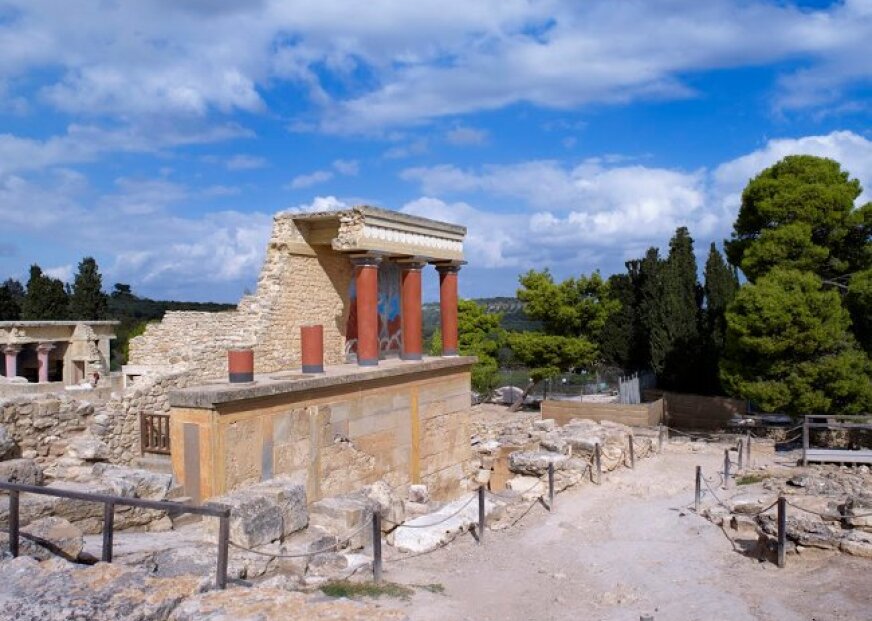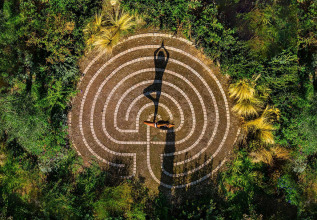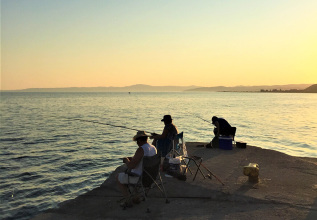5 MIN
TRAVEL TIPS
Of All the Places to Love – Then There’s Crete

Situated in the south of the Aegean, bordered by the Cretan and the Libyan Seas, Crete is the largest of Greece’s magnificent Islands. As for culture, this mystical and ancient place is also one that has preserved over many centuries a definite and unique character.
Crete was the center of Europe’s earliest civilizations and the echoes of which can best be felt at a place known as the Minoan Palace at Knossos – by far the largest and best preserved site of Bronze Age, wonder on Crete. The Minoan civilization that flourished here between 2700 BC and 1450 BC, to this day compels endless speculation, study, and conversation as to our place as human beings, in this world.
Home of the legendary King Minos, Knossos (image below) was excavated and partly reconstructed in 1900 by British Archaeologist Sir Arthur Evans and today we can appreciate the grandeur and complexity of this structure of approximately 20,000 square meters. The Ancient site of Knossos can be found at 5km south east of Heraklion and includes: Knossos Palace, The Little Palace, The Royal Villa, The Frescoes House and the Temple Tomb. All across Crete, in fact, great mansions, temples, shrines, and other cities compel visitors, propel thought, remind us of an age old tapestry of humanity, laid out over these wondrous islands and landscapes, seen now as largely tourist destinations. Lest we forget, the very origins of civilization lay largely buried beneath the soil of Minos’ island nation and that culture there is still a major part of life.

Further along in Heraklion, the capital of Crete fosters in the Archaeological Museum treasures from the ancient world. One of the largest and most important museums in Greece, Heraklion Archaeological Museum is considered as the museum of Minoan culture par excellence worldwide, and one of the most important museums in all Europe. The venue hosts artifacts covering 5,500 years of Cretan history, from the Neolithic to the Roman times. The Minoan collection includes unique examples of Minoan art such as: pottery, carved stone objects, seals, small sculptures, metal objects and wall paintings.
No visit to Crete could be complete without seeing this amazing exhibition of history, right in the heart of Heraklion. Not far away from the capital of Heraklion (one hour distant), lies the third largest city of Crete – Rethymno, with its Venetian Fortress. Built between 1573 and 1580, for protection against pirate raids and the threat from the Turks, the Venetian Harbour or Venetian lighthouse, here is as iconic a photographic symbol as it is, an historic one. Everyone seems to want a picture of / or with this beautiful spot in it. To the north and west of Crete, 160km from Heraklion, the old town of Chania (image below) stands on the ancient site of Kydonia.
Chania is the second largest city of Crete and the capital of the Chania regional unit. The old town of Chania, with its narrow winding streets, cozy cafes, beautiful old Venetian buildings, and handicraft shops, shows visitors the magic of ancient times, and typical Cretan hospitality and merchandising as well.

Not far off from Chania, in the Western part of Crete, we find one of the longest gorges in Europe named Samaria Gorge, a National Park so rich in plant and animal life, not to mention spectacular scenery, throngs of hikers and outdoors, people flock there each year. Then, in between Chania and Rethymno, surrounded by luxuriant vegetation too, is situated Lake Kounas – the only natural freshwater lake on Crete. It’s a natural treasure to behold as well. From north to south, west to east, Crete wears the cloak of majestic history and mythology, right along with the crown of unsurpassed natural beauty. Villages and old towns remind with every step of legendary Kings and mythical characters. Marks of Crete’s long history are everywhere on the island: from Minoan palaces, Venetian towns, Medieval Castles or Ottoman mosques and Byzantine monasteries, to the well lined faces of Crete’s generations, the people at every turn – they are a living testament to a place like no other.
Crete is not just a history lesson however, it's also a party place, a land of beautiful countryside, stunning beaches, and the crystal waters Minoan priestesses no doubt bathed in and still do for that matter. This is a place of clear warm waters, sun and calming sea breezes. Paradise, if a word signifies such places. Oh and let’s not forget, maybe Crete’s most important feature of all, the legendary Cretan diet known worldwide as the healthiest of lifestyle choices.
Crete is a genuine a place as there is, not just as a country or region, but actually as a way of life.
You have to visit Crete. Corina Manea for Lato Boutique Hotel


